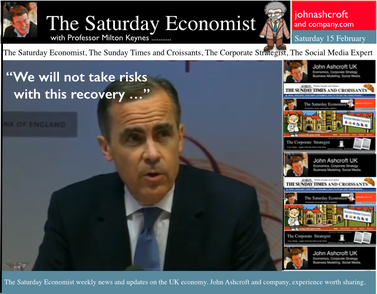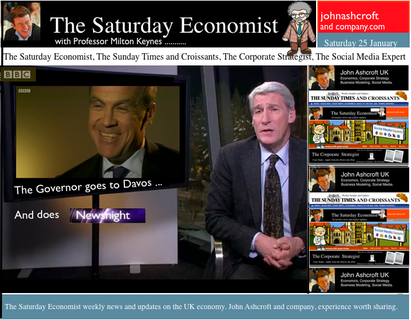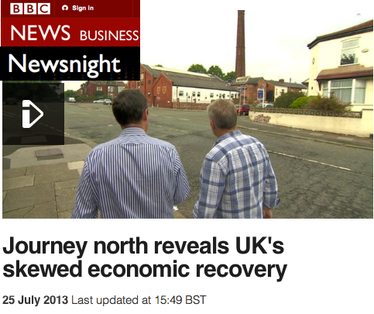 We will not take risks with this recovery … The Bank of England will not take risks with this recovery, according to the latest statements from Mark Carney, Governor of the Bank of England. Base rates will remain on hold for some time yet. When they begin to rise, the increase will be slow and gradual. It will be many years before fair value base rates of 4.5% will be on the agenda, according to the guidelines issued this week. Markets anticipate the first rate rise may appear in the second quarter of 2015. Thereafter a rise to 2% may be possible but not until the end of 2016 or the beginning of the following year 2017. “The level of interest rates necessary to sustain low unemployment and price stability will be materially lower than before the crisis,” the more cryptic quote. The recovery has gained momentum. Output is growing at the fastest rate since 2007, jobs are being created at the quickest pace since records began and the inflation rate is back at 2%. “The recovery has been underpinned by a revival in confidence, a reduction in uncertainty, and an easing in credit conditions”. Yes, Forward Guidance has been a success! The Bank of England expect the economy to grow by 3.8% this year and 3.3% next year assuming interest rates are held at 0.5% through 2014 and into 2015. Assuming rates follow the path outlined in current market profiles, growth will be a more modest 3.4% this year falling to 2.7% next. A recovery neither balanced or sustainable … No wonder the Bank consider the recovery is neither balanced nor sustainable. The recovery is dependent upon household spending, with a sluggish investment performance to date and a structural trade deficit, exacerbated by weak growth in Europe. Growth of 3.4% is significantly above trend rate and above most forecasts for the year. Consensus forecasts predict growth of just 2.7% in 2014 falling to around 2.5% next. The bank is very bullish on a recovery in earnings, consumer spending and investment. We shall see who is right in due course. For the moment, the Bank looks hot! So what of Forward Guidance … Forward guidance may have been a success but the single point reference to the unemployment rate has been beset with problems. The 7% guideline for unemployment will be breached in the first quarter this year. Hence the single point guideline is on the way out. It was too easy to understand. The Governor will not be allowed to make the same mistake again. The Bank collective has had its way. “To allow others to monitor how the economy is evolving relative to our projections, today we are publishing forecasts of 18 more economic indicators.” Excellent. Yes, now we will have eighteen guidelines to better understand policy. The output gap is back, as is the meandering NAIRU. Eighteen reasons why it will prove more difficult to pin the Governor in difficult interviews on Newsnight in the future. It was never clear why 7% was the correct number to choose anyway. The Americans bagged the 6.5% level first but the Governor admitted the long term NAIRU was more like 5% anyway. It was just a number but at least we could “see it” so to speak. Not so the “Output Gap”. What is the size of the output gap? What colour are the eyes of a Yeti? an equally productive debate. In a service sector economy with limited supply constraints, does it really matter anyway? Forward Guidance is a great step forward. Simplicity, part of the success, made the process just too transparent for some. Forward Guidance USA … Over in the USA, Janet Yellen, as the new Chair of the Fed provided assurances there would be policy continuance following the Bernanke regime. Accommodative monetary policy, with progressive tapering remains on the agenda. The US is expected to grow by almost 3% this year with inflation below 2%. Unemployment will fall below 6.5% through the year. So what of forward guidance, - markets believe a rise in base rates may be possible towards the end of this year or early next. So what happened to sterling? The pound closed up at $1.6730 from $1.6407 and 1.2220 from 1.2030 against the Euro. The dollar closed at 1.3690 from 1.3635 against the euro and 101.82 from 102.31 against the Yen. Oil Price Brent Crude closed at $108.56 from $109.57 The average price in February last year was almost $116. Markets, moved up - The Dow closed at 16,105 from 15,794 and the FTSE closed at 6,663 from 6,571. UK Ten year gilt yields closed at 2.80 from 2.71 and US Treasury yields closed at 2.74 from 2.69. That’s all for this week. No Sunday Times and Croissants tomorrow or for the rest of this year for that matter. We are taking a break in this pre election year. Join the mailing list for The Saturday Economist or forward to a friend. The list is growing as is our research team. John © 2014 The Saturday Economist by John Ashcroft and Company. Experience worth sharing. The material is based upon information which we consider to be reliable but we do not represent that it is accurate or complete and it should not be relied upon as such. We accept no liability for errors, or omissions of opinion or fact. In particular, no reliance should be placed on the comments on trends in financial markets. The receipt of this email should not be construed as the giving of investment advice.
0 Comments
 Employment surge will force rethink on forward guidance … The governor went to Davos this week and also appeared on the Paxman Show. He was asked about unemployment, forward guidance and Bitcoins! Excellent. Unemployment Unemployment fell to 7.1% in the three months to November according to the latest data from the ONS. Over 30 million were in employment up by 280,000 on the prior three months. Good news for the economy and a measure of the strong recovery in the UK, particularly in the second half of the year. The claimant count measure fell by 24,000 to a rate of 3.7%. The unemployed (claimant count) will fall below the one million mark by the end of 2014 based on our current forecasts. This would be in with levels last seen in September of 2008. No need then to worry about household incomes, earnings will begin to recover significantly as the job market tightens through the year. Forward Guidance So what of forward guidance? “Mark Carney has torn up his original low interest rate policy after completely misjudging the speed at which unemployment would fall” according to Phillip Aldrick writing in The Times today. Well not really. It is true the Bank of England model assumed the 7% hurdle rate would be triggered in 2015 rather then by the end of 2013! Nevertheless, the overall parameters of forward guidance remain in tact. The major concern of central bankers is conditioned by the experience of The Great Depression and the Lost Decade. Monetary policy will remain accommodating until the recovery and “escape velocity” from recession is secured. Even then, rates will rise slowly and gradually. It will be some years before a return to equilibrium base rates of 4.5% is achieved, the additional guideline. In the Inflation Report due next month, the bank will consider a range of options to update Forward Guidance. The simplest solution, an update to the unemployment hurdle rate from 7% to 6.5%. The challenge of a more complex hybrid may prove irresistible. As for escape velocity, tapering in the US is expected to accelerate. There seems little justification, if indeed there ever was, to continue to spend Fed dollars on US Treasuries and mortgage debt. 3% growth in the USA economy appears possible this year. That’s a faster rate than in the years leading up to the collapse in 2008. Borrowing Figures The UK Government borrowing figures were released this week. The government is on track to reduce the level of borrowing to between £105 billion and £110 billion this year. Receipts are rising faster than spending and the overall level of borrowing in the first nine months of the year is down by over £5 billion. Inflation down, borrowing down, unemployment down, earnings will begin to rise later this year. The platform for the election is well set. Just the trade figures alone will continue to disappoint as problems in Europe persist. So what happened to sterling? Markets were disturbed by the possibility of more tapering, undermining stock market strength in the USA and destabilizing international capital flows across developing economies. Poor readings from manufacturing data in China and Japan, plus problems with the Argentinian peso created the “perfect storm” for markets at the end of the week. The CBOE Vix volatility index shot up from 13.8 to 18.14 at close. Some way off the 55 level recorded in the depths of despair in 2010 but a measure of late volatility nevertheless. The pound closed at $1.6481 from $1.6422 against the dollar and 1.2041 from 1.2127 against the Euro. The dollar closing at 1.3681 from 1.3538 against the euro and 102.34 104.23 against the Yen. Oil Price Brent Crude closed at $107.88 from $106.48. The average price in January last year was almost $113, so no real threat to inflation from crude oil prices Markets, moved down - The Dow closed at 15,879 from 16,458 and the FTSE closed at 6,663 from 6,829. 7,000 on the FTSE a soft call for the near term, requiring a little more work in progress. UK Ten year gilt yields closed at 2.78 from 2.84 and US Treasury yields closed at 2.72 from 2.82. Yields will test the 3% level as tapering accelerates into 2014 but for this week, the flight to quality led the market. That’s all for this week. No Sunday Times and Croissants tomorrow or for the rest of this year for that matter. We are taking a break in this pre election year. Join the mailing list for The Saturday Economist or forward to a friend. The list is growing as is our research team. John © 2014 The Saturday Economist by John Ashcroft and Company. Experience worth sharing. The material is based upon information which we consider to be reliable but we do not represent that it is accurate or complete and it should not be relied upon as such. We accept no liability for errors, or omissions of opinion or fact. In particular, no reliance should be placed on the comments on trends in financial markets. The receipt of this email should not be construed as the giving of investment advice.  There is something very worrying about Newsnight - Paul Mason and economics. This week Mason visited Eccles, to investigate the economic recovery and how it is affecting job growth in the North West. Eccles, why choose Eccles? Well, we learned, there are 77 outlets selling alcohol within one kilometer along the high street. Do the maths, that’s one every 12 metres. Pawn shops and betting shops can be used to break up the pub crawl and provide additional funding en route. So what can we do to restore the Eccles high street to it’s former glory, asks the man born in Leigh, educated in Bolton and with a degree in music from Sheffield? It will take ten years, real jobs and training in skills to begin to restore the balance says Alec McFadden, from the Salford Unemployed Community Centre. There is no quick fix! Quite right Alec. Alec has been engaged with this problem for some time now. Eccles is what we call in economics “ a structural problem” says the itinerant BBC presenter. No it’s not, it is representation of social deprivation in a specific area of the Greater Manchester. It is also an example of what can happen to a high street, when the Trafford Centre, two retail parks, a Costco, B & Q, Asda and Marks and Spencer open up within a ten minute drive time. Newsnight could have made a visit to Media City, a great example of job creation and infrastructure investment into the new dynamic growth areas of digital and creative media. After all, it’s only ten minutes away by tram, a great example of infrastructure investment in Greater Manchester, part of the Transport for Greater Manchester Plan. Whilst there, he could have visited the Salford University New Media Campus, after all Manchester has one of the largest university student populations in Europe. He could have arrived by plane, reminding viewers we have just bought Stansted. Had he done so, he would have passed the Airport Enterprise Zone en route within sight of the new Medi Park, both on track to create a substantial number of new jobs over the next five years within Greater Manchester. No, Newsnight had to go to Eccles. It had been a long day. Paul had taken breakfast in a pop up breakfast bar in Soho, it doubles as a bar in the evening. “It’s what we call in economics using spare capacity” says the man who once trained to be a music teacher. No it’s not. It’s a pop up shop using space capacity, not quite the same thing as doubling up shifts on a car production line to meet demand in a growing economy. For lunch, Paul was in the Midlands to visit BSA Machine Tools. Now with 35 workers, Paul wanted to understand the constraints to growth. BSA Cycles Ltd and BSA Guns Ltd also in Birmingham, once controlled 67 factories, employed 28,000 people and contained 25,000 machine tools. The now much smaller BSA Machine tools was struggling to expand again because of a lack of skilled labour and and access to finance. Shocking, the problem - labour skills and those banks again. Mason claimed “It was said the recovery would be led by industry and exports to rebalance the economy”. Not really Paul, The march of the makers rebuilding the workshop of the world was always a Whitehall dream. Most economists never really believed that anyway. Will the problems of capacity constraints in Birmingham and Eccles lead to low growth in the UK economy as a whole? He asked. Of course not. Job creation continues at pace in the private sector. The problems exposed in the world of Paul Mason’s economics are not “structural” problems, they represent myopic, misleading perceptions of economic reality which do nothing for the reputation and image of Manchester and the North West. They don’t do much for the reputation of Newsnight either The closing shot featured Paul Mason having “tea” in Eccles, fish and chips on the high street. The people of Eccles looked on. They have no jobs, well let them eat Eccles cakes, the obvious solution. The journey north did not reveal the UK's skewed economic recovery, more the skewed thinking on Newsnight. Miss the show, watch it here and let us have your views |
The Saturday EconomistAuthorJohn Ashcroft publishes the Saturday Economist. Join the mailing list for updates on the UK and World Economy. Archives
July 2024
Categories
All
|
| The Saturday Economist |
The material is based upon information which we consider to be reliable but we do not represent that it is accurate or complete and it should not be relied upon as such. We accept no liability for errors, or omissions of opinion or fact. In particular, no reliance should be placed on the comments on trends in financial markets. The presentation should not be construed as the giving of investment advice.
|
The Saturday Economist, weekly updates on the UK economy.
Sign Up Now! Stay Up To Date! | Privacy Policy | Terms and Conditions | |
 RSS Feed
RSS Feed